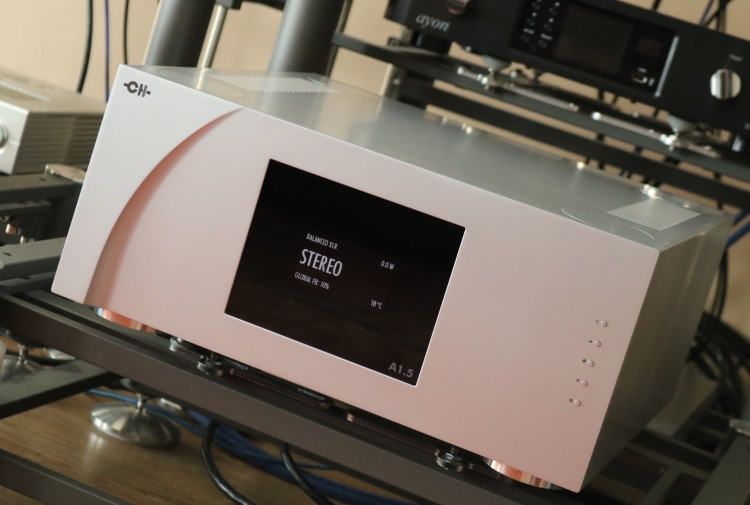
Miracles do exist!
Review sample supplied by CH Precision
Retail Prices in the EU, incl 20% VAT:
A1.5: 34.600 euro
A1 to A1.5 upgrade: 15.200 euro
When reviewing the CH Precision C1 and A1 earlier this year, the C1 quickly established itself as the absolute best DAC that I had ever heard. Likewise, the A1 was the first amplifier that I heard to combine incredible speed, dynamics, articulation, and transparency with amazing fluidity, naturalness and overall finesse. In my book, all of these attributes just could not be combined in a single amp, but CH Precision made it happen. While it can be argued that tube amplifiers have a different set of virtues that can also be very appealing, such as richer harmonics or a more fluid presentation, none of the amps that I tried so far have been able to match the A1 on all accounts. The Zanden 8120, for example, quite uniquely combines the desirable aspects of tubes with traditional transistor strengths. While it comes closer than any tube amp I tried before, the A1 retained the lead position in terms of speed, articulation and bass control. But that’s the way that it is: tubes and transistors remain in opposing camps, even if they are getting closer to one another. In the transistor camp, it’s certainly possible to find an amp that sounds more sonorous than the A1, or one that has a richer midrange, for example, but invariably these amps perform less well in one or more other parameters. So, while it is all relative and there is no single “best” product for all tastes, it is its superb balance of virtues that, for me, makes the A1 so difficult to beat. And then, along comes the A1.5, which actually does beat the A1 at its own game, and then some! But before I proceed to the listening sessions, let me explain the differences between the A1 and the A1.5.
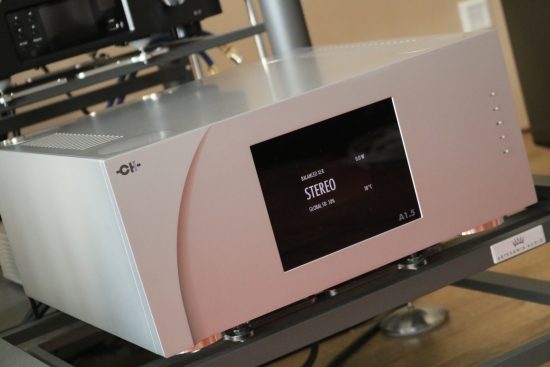
What’s new?
The most obvious difference is the size: the A1.5 has the same width and depth as the A1 but is considerably taller, 50% taller, in fact. The input- and output stages have not changed from those in the A1. The output stages have always been more powerful than required by the application and they were ultimately limited only by the power supply. The A1 already had a very large toroidal transformer and a bigger one would not fit within the existing casing. But simply upping the power was not what drove the decision to upgrade the A1, rather it was the realization of how much improvement the new “Red Caps” upgrade brought to the company’s biggest amplifier, the M1 which turned it into the M1.1. The name “Red Caps”, incidentally, stems from their color. They were ordered in red and referred to as “the red caps” internally and it has somehow become their name. When the technicians at CH tried these same “Red” capacitors in the A1, the improvement was staggering and that’s what initiated the decision to build an improved version of the A1, which would become the A1.5.
Below is the company’s official statement regarding the A1.5’s new capacitors:
As part of the A1.5’s development, CH Precision has recently compared top of the line electrolytic power capacitors from several of the most renowned component manufacturers. Voltage rail ripple measurement, amplifier output noise measurement, and most importantly direct listening comparison allowed us to easily rank the tested models in terms of micro and macro dynamics, noise floor and low-frequency control. After further refinement and customization with the manufacturer of the best model that we tested, we were able to finalize the A1’s bigger brother, the A1.5.
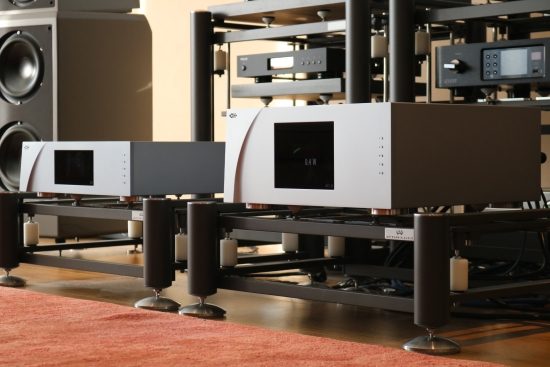
Left: A1, Right: A1.5. It took me literally no time at all to appreciate the new form factor. I think the new amp has even nicer proportions than the A1.
The new 1700VA toroidal transformer, along with the aforementioned new “Red” capacitors that increase the output rating from 100 to 150 watts into 8 ohms, combined with the new internal layout, makes for a leap in quality. According to CH Precision, the A1.5 now comes closer to the performance of their flagship, the M1.1. As I know CH Precision to be a company that is not at all in the business of making hollow statements, you better believe it! Oh, and the best part? Any existing A1 can be upgraded to an A1.5.
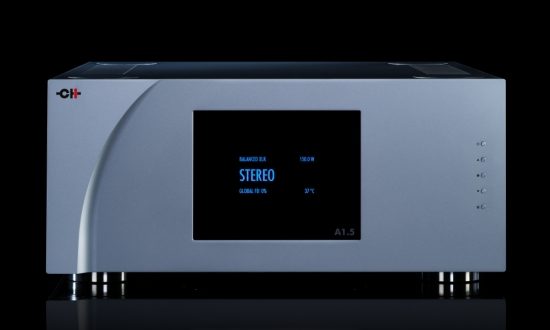
Another difference is in the transport screws, or rather, the lack thereof. For all CH products, the power supply sits on a metal plate that is supported by flexible Silent Blocks and with the A1 this plate needed to be fastened from the bottom using 3 big thumb screws for transport. Thanks to a smart system that restricts excessive movement but at the same time allows the required movement for the Silent Blocks to work their magic, there is no more need to flip the amp upside down and insert or remove any screws. And given its weight, that’s a very good thing!
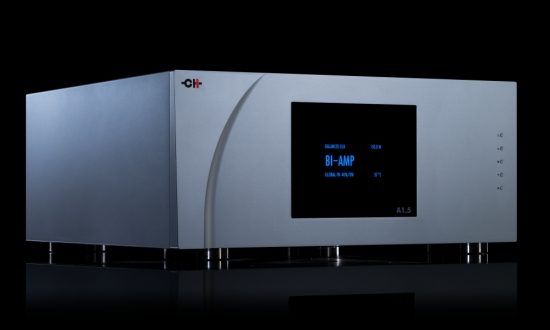
Finally, after hearing from multiple M1 customers that they preferred using the 10% global feedback setting, it was decided to add this value to the A1.5 as well. So, now its global feedback can be set to 0, 10, 20, 40, 70 and 100 %. I quickly found that I also have a preference for the 10% setting but wherever comparisons with the A1 were in order, I used the closest setting that both amps offer, which is 20%.
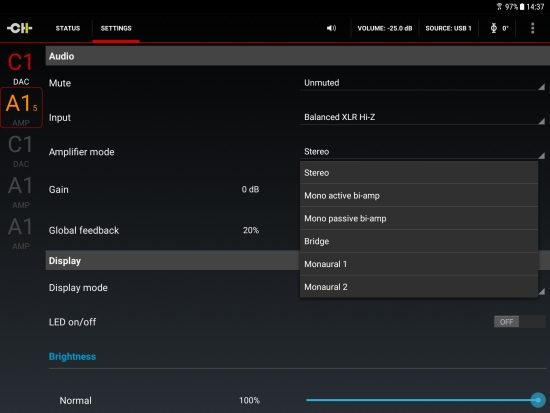
Above: Settings tab, Amplifier Mode setting pop up window. This is only one of the tens of screens with settings. It’s a tweakers’ dream come true! This amp works right out of the box, though, and should you “mess up” then you can always restore the default settings very easily.
Features
All the features of the A1 remain the same: the front panel OLED display still displays a selection of modes containing every possible aspect of the amp’s status, the amp’s entire setup menu can still be controlled via its front panel buttons or via the CH Control Android app and all the clever amplification schemes are still there. For its extensive connectivity and superb configurability, CH Precision amplifiers truly are one of a kind. For a full description of all the features, please refer to the original A1 + C1 review.
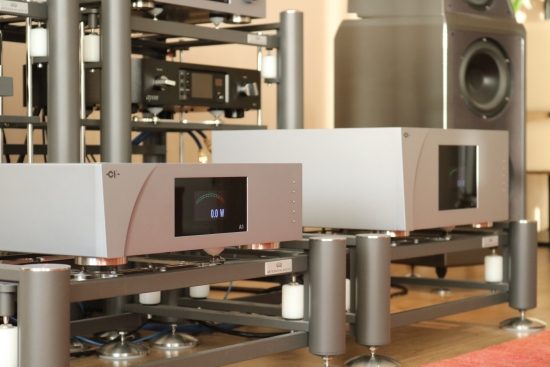
Not only a matter of power
The 100-watt A1 may not appear to be a powerhouse but I am absolutely confident that it drives virtually any loudspeaker in the world. The only limitation, ultimately, would be absolute power, which originates from its power supply. Theoretically, if you crank the volume up to earsplitting levels while using inefficient speakers, then the limitations could become clear. But in my room, with the Wilson WP8, this never happened, not even with the volume control at “are you crazy” level. So, one could wonder if any extra power is needed or even desirable. In my situation, honestly, I did not think so. But boy am I glad that I got the chance to hear this new amp in my system!
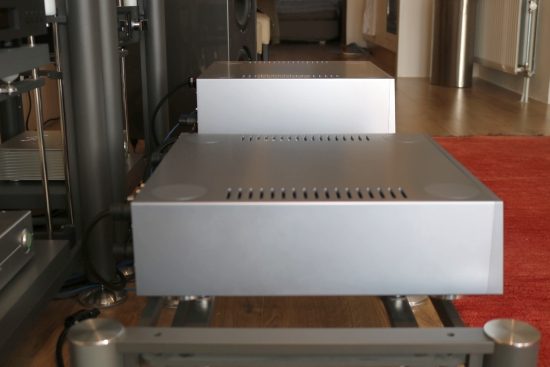
Traditionally, when comparing a medium-powered amplifier with a more powerful amplifier of the same brand, obviously, you get more power. And often, for better or for worse, the amp will “sound” more powerful, too. But any amplifier’s sound is the result of a delicate balance of internal circuits and decision making that is easily offset. in my experience, the increase in power usually has a detrimental effect in one or more other aspects of the amp’s sound. Speed, articulation, refinement, transient purity, airiness, fluidity… usually at least some of these areas take a step back whenever the transformer size increases or output transistors are added. It’s only logical and in some cases, the change in the amp’s sonic balance can actually have an effect that is desired by many. Oftentimes, what you get in return, along with the extra power, is a richer, fuller, more sonorous sound. Take Bryston, for example. All their amplifiers follow the same principle and are marketed as being of the same quality, differing only in power output. Still, the 3B Cubed, for example, sounds faster and more articulate than the more powerful 4B Cubed. The latter, however, has a more sonorous, creamier, richer sound that is preferred by many. I have a lot of sympathy for Bryston and am using this brand as an example only because I have reviewed a bunch of them at the same time not too long ago but, in my experience, this principle holds true for many class A or AB amplifiers.
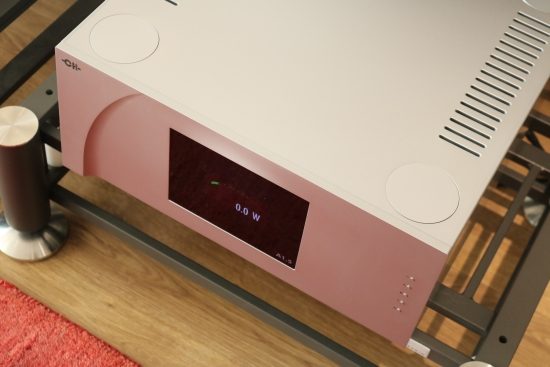
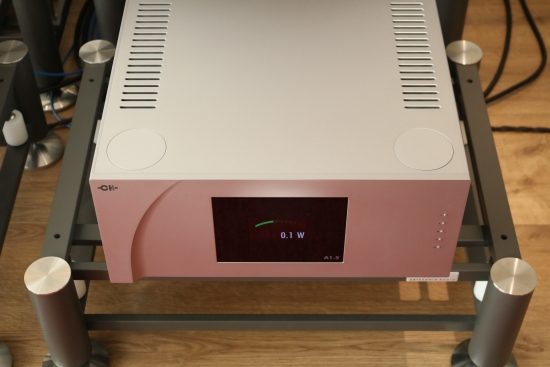

Personally, I like my amps to be fast and articulate but I would absolutely choose the aforementioned richer sound over the alternative. You see, the other thing that can happen as the amplifier power increases is that the sound becomes ever more controlled and you start to lose the sense of life and natural flow. What I’m trying to illustrate is that, usually, the balance of virtues is shifted when going from a medium power amp to a higher power amp, even if the circuits are pretty much identical. In my case, even if the extra power would be beneficial, I did not want my A1 sound to change. For me, it already had a perfect balance. And so, rather than swapping my A1 for the A1.5 immediately, I first opted to do a comparative listening test. But I needn’t have bothered…
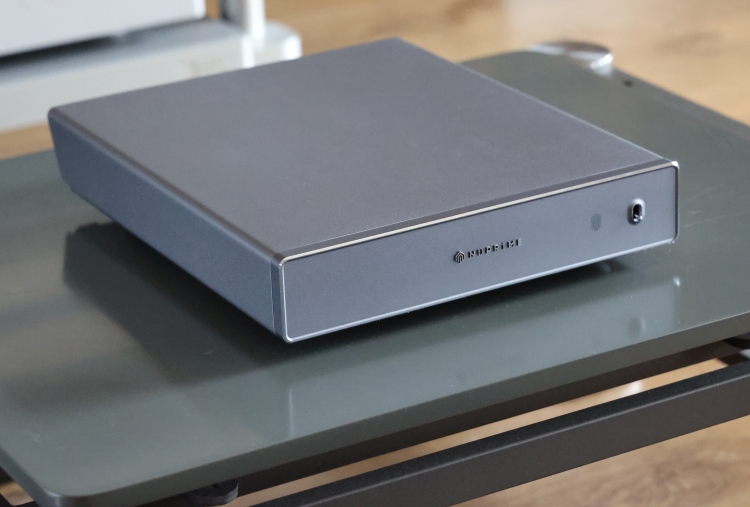
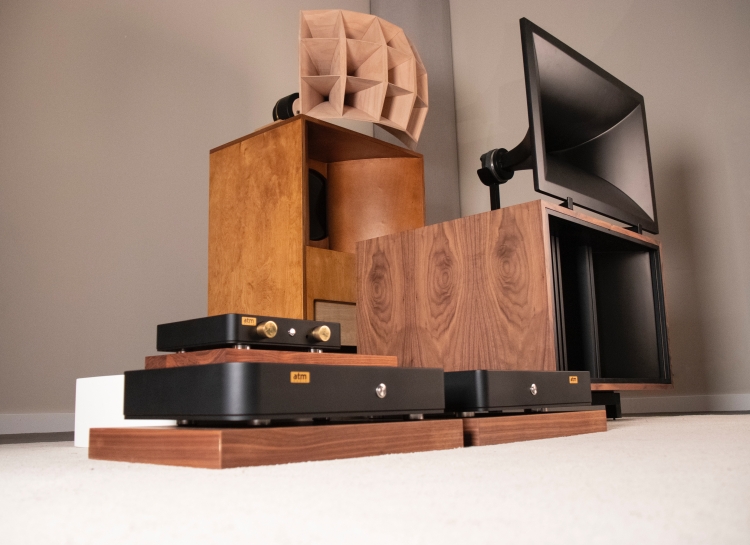
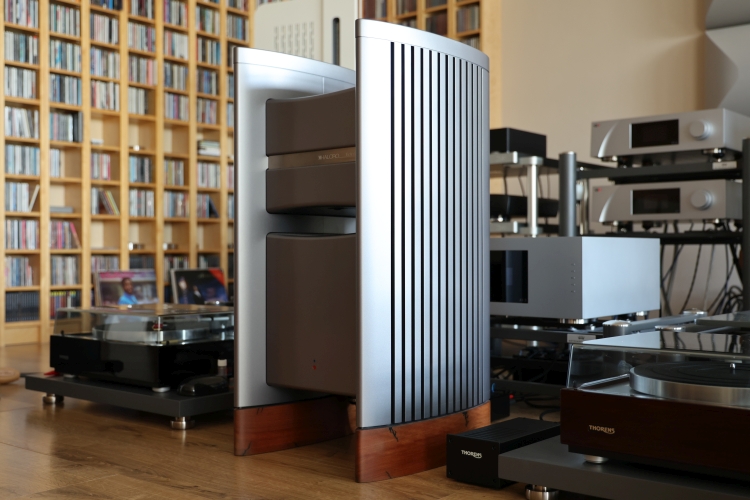
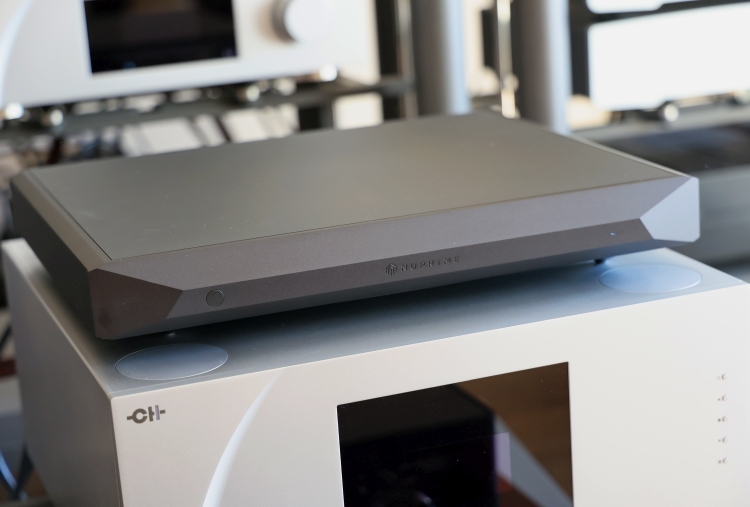
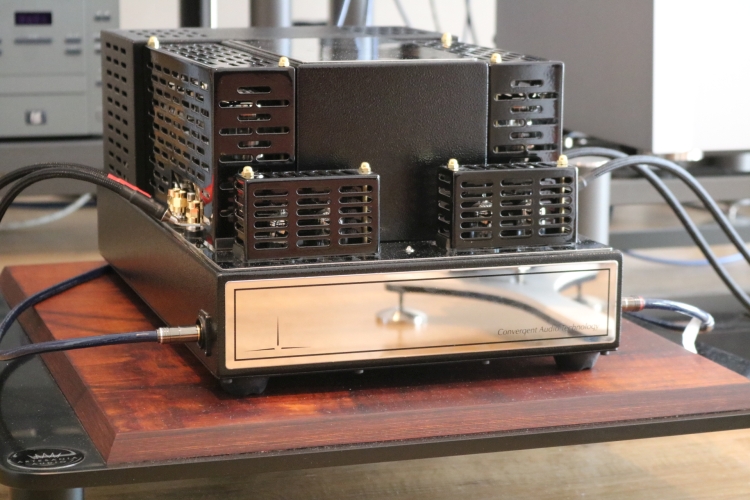
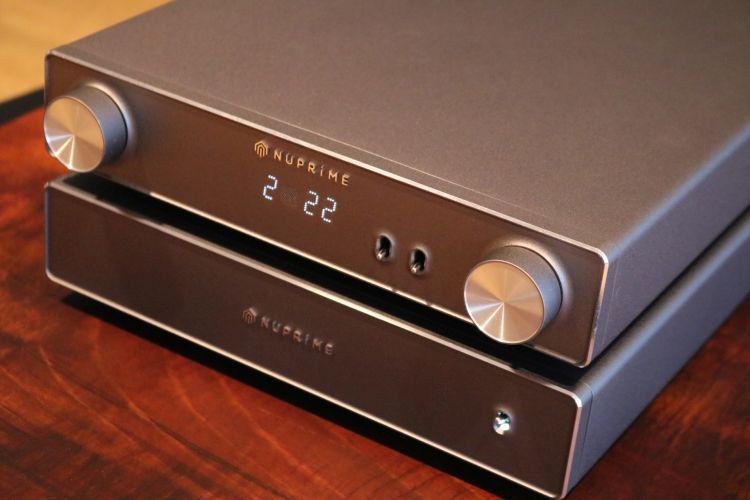
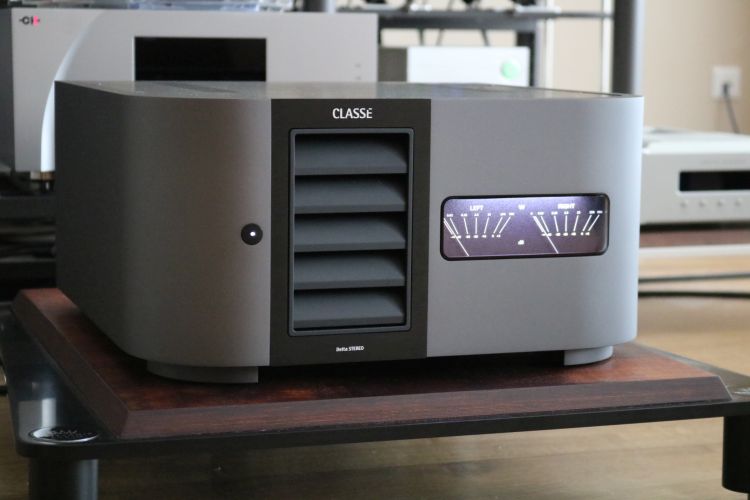
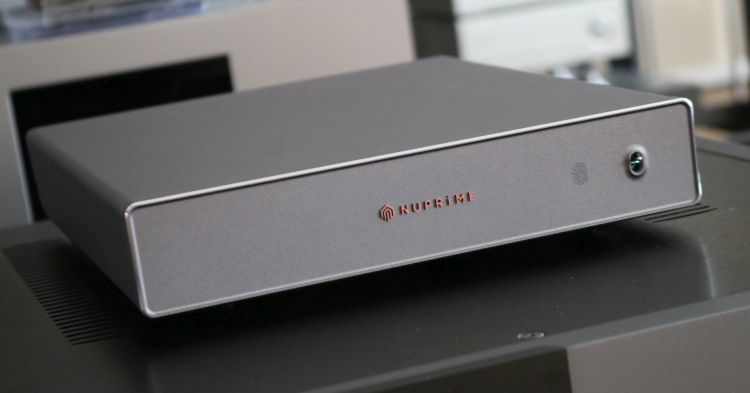
Christiaan,
Congratulations on finding the ideal amp to drive your Wilsons. As your search was long and fairly extensive, you must take considerable satisfaction in finding such a great match. In addition, I believe your review of the A1.5 is the first in English.
I discovered HFA through the link on the CH Precision site to your very interesting review of the C1 pre and A1 amps. That review and your enthusiasm really helped kindle my interest in the C1 and A1.5. At some point, I’m going to have to arrange an audition (some travel required).
In your C1/A1 review, I was most impressed with the number and variety of different speakers and setups you tried and reported. All very informative, and I can’t recall seeing such a detailed analysis elsewhere. Although this review of the A1.5 was shorter, I hope we can look forward to reading more about the amp in your reports on other components. Do you think your friend would be willing to bring over his Soulution 711 again for a direct comparison?
Azuma
Thanks Lee! Indeed it was a long journey but one that I did expect after switching from Apogee Divas to Wilsons. These are quite different worlds requiring very different approaches, especially in terms of placement, in my room at least. My A1.5 review is indeed the very first one to appear. I may even be one of the very first to own an A1.5. If you’re interested in maybe upgrading from A1 to A1.5, trust me: the difference is not subtle!
The A1.5 review is more concise, you’re right, but given the history with the A1 preceding it, it should be quite conclusive nevertheless. Since the amp is now part of my system indefinitely, you will certainly be reading more about it combined with other products. First up will be the Kroma Audio Carmens and Xavian Orfeos. Meanwhile I am indeed trying to make a comparison between A1.5 and Soulution 711 which will probably take place in the friend’s setup. He has a different range of speakers so that will certainly prove interesting.
I’m happy to hear you are planning a Soulution vs. CH Precision report. These are the two amp makers that most interest me now and I don’t know of any other site that has put them head to head driving the same speakers in the same room. That should be fascinating!
To pay the same money as for a loaded BMW for a – box (and no diamonds in it nor gold)? No, thatk you.
Sour grapes?
WOW!!! YOUR REVIEW IS DETAILED & SPOT ON!!! CH PRECISION IS THE BEST OUT THERE IF ANY ONE SEARCH FOR THE BEST!!! HERE MY MUSIC PREFERENCE IS ROCK, CLASSIC ROCK,METAL, POP ETC. AND I LIKE TO KNOW BETWEEN SOULUTION & CH PRECISION WHICH WILL BE BEST FOR ROCK/ HARD ROCK??? MY SPEAKER IS REVEL ULTIMA SALON 2. WHICH MAY BE IN NEAR FUTURE I WILL CHANGE TO A WILSON SASHA DAW. THANKS FOR YOUR INPUT!! ???
While the CH components do well with any style of music if I had to choose between CH and Soulution for a music diet mostly concentrated on Hard Rock, based on what I heard with the 711, I would opt for the latter. The A1.5 is better with low-level resolution and overall refinement and the 711 has a more forceful, more full-bodied delivery. Also see my comparison of the A1.5 with the 711. In any event, both amps will work well with either the Ultimas or the Wilsons.
My 1994 restek challenger in 2014 was completely overhauled by restek in germany and brought up to date and also has got those red caps, and my restek is a passive integrated amplier, just like my avi s2000mi with no preamp to mess up its sound quality with my very high quality digital source components. The restek is quad balanced dual differential complimentary amplifier, and has its transformer encased and resin potted. It also has 150 Watts into 8 ohms. It is also completely silent, no electronic noise and hiss. Also it is another very fast widebandwith amplifier, while sounding completely natural, clear detailed, harmonic, and dynamic.
My passive integrated restek while also a been of dual monoblock design is fully regulated while totally biased in continuous class A dc input current and voltage, and has the very large fet heatsinks for its current and voltage gain stage to prove it. Do newer amplifiers sound better ? and the answer is no. As it has constant current and voltage maximised at the same time, making it clear, completely natural, with fast dynamics and harmonics also. Completely balanced top to bottom. The circuit topology design for this amplier is as simple as it can get for this topology design. Take a look at bryston and look how much more complex and complicated they have made this topology. Restek got the design topology right before bryston did, by not making the circuit more complex and complicated. My amp has been overhauled and serviced and brought up to its best and latest modifications, including its red cap capacitors, and its completely sealed and resin potted power supply, it sounds much better than the new brystons will ever be able to sound with their more complex and complicated circuits. The emperors new cloths in audio is not always better, when the older one is perfectly refreshed and brought up to top specification capability, while costing a fraction of the price for the new and latest audio gear buzz.
Hello, Thank you for all of the reviews that you provide. It is great, particularly during Covid when hearing is almost an impossibility. Also, as a woman looking for an upgrade you and I seem to be on the same page. I have had Wilson speakers (Sabrinas for space) but now have a bigger space and have Vivid G2s. I have a Rowland set up with 625 S2 and Corus and Aeris plus power supply. But I feel the 625 S2 is holding the speakers back. Yesterday I heard the CH Precision A1.5 and their line (DAC, power, and pre-amp) and it was gorgeous. But Rowland has a new 735 mono block for the same price range, meaning I could upgrade the amp without having to go all in. But then I wanted to hear the Soulution 5series as well since that might be compatible and comparing apples and apples. What do you know about the Soulution 511 and or the new Rowland mono blocks?????????? I would really love to know since you respect and also like the Rowland brand. Hope to hear, Ellen
Hi Ellen, Good move going from Sabrinas to G2’s. In my book, that’s an improvement all-round. However, one thing to look out for with Vivids is that they can sound slightly unnatural or synthetic in certain combinations. I find that Jeff Rowland amplifiers have a similar characteristic and thus when combining the two I find the match is not ideal in terms of natural timbre. I agree that the 625 does not allow the G2’s to shine to their fullest extent. I heard all Rowland amps outside of the 925 and I agree that the CH A1.5 is just a better amp allround. Although I have not heard the new/upcoming 735’s and they might indeed be better than the 725s, I would wager that the improvements will be incremental, they would not break the Rowland mould. On this site I make no secret of really liking CH but of all the amplifiers that I heard I think it really is the best match for the G2’s.
I understand that it would be easiest to just upgrade the power amp and retain the Corus/Aeris/PSU but having compared this stack to the CH C1, on several occasions and in different settings, I can tell you that the latter outperforms the beautiful Rowland stack by no small margin. The C1 has better timbre, is more transparent, is more expressive and has a more solid presentation with crispier focus and better soundstaging. Simulataneously, it retains the fluidity, air and refinement that so far has been pretty much exclusive to JRDG gear.
I have not yet heard the Soulution 511 but I did compare the A1.5 directly to the 711. Based on that experience I would say that Soulution is also a great contender but with different strengths, predominantly in terms of bass heft and body. If it’s the Rowland-typical fluidity and nuance that you prefer then the A1.5 is the better option.
Hope this helps your decision-making!
Really appreciate your review and comments here.
I am currently considering upgrading from my Simaudio 860a v2 monos to a pair of CH A1.5.
Do you have thoughts you could share that could help me decide? I run Nordost to YG speakers.
I generally prefer articulate bass, resolution and clarity if there is a trade off with warmth and relaxed presentations.
Anyway, don’t want to take up your time so if you have any quick thoughts, thanks in advance!!
Glad to hear you’re enjoying my articles:-) From your comment I gather that your listening preferences are likely close to mine. Like you, I prefer articulation and clarity over warmth, although I don’t want the music to be devoid of color or sound sterile. While I have no experience with Simaudio in the context of my own system, I have heard several Simaudio amplifier models being compared with others at shows and demos. As such, I think my thoughts might still be helpful. Likewise, I’ve not heard two A1.5’s in mono mode, but I have extensively compared the A1 in mono and stereo mode. Following that experience, I noted a more extension at the frequency extremes, a more expansive soundstage, and a more agile, airy, and free-flowing feel, when going from stereo to double mono. I have not noted a gain in terms of articulation or resolution going from the single amp to a mono’d pair but with more difficult speakers and when playing more loudly, there are of course the expected benefits of increased power. Given your preference for articulation and clarity, I can put your mind to rest as I have simply not heard an amplifier that is more articulate and precise than the A1.5. But rather uniquely, the A1.5 manages to not sound dry and remains agile and fluid. It is not polished but has a gentle quality that makes some amplifiers sound a little rough. With respect to Simaudio, I think you will hear an increase in precision, tightness, resolution, refinement, air, and transparency. Along with this, and I’m guessing here, you will likely also hear a decrease in the roughness that is associated with typical transistor amplification. CH as a brand does not add warmth but the immense resolution and refinement do make the performance more liquid and organic, which might translate as a slightly less “in your face” kind of sound. Ultimately, if your preferences are indeed similar to mine, I think you might be hugely impressed when switching to the A1.5’s, but only a personal audition will prove definitive.
Thank you very much for the informative reply. My only remaining hesitancy… would you say that a pair of CH A1.5s could rival the dynamics and slam in the mid/low bass of a pair of 860a v2 monos with fairly hard to drive YG speakers? I know it is hard to say without having heard them in the same system, but the 860s sure do have alot of juice and control in that department. Thanks again Christiaan!
The way I see it, thickness is often mistaken for slam or power, although there is indeed a linear tradeoff between roughness and refinement with respect to perceived slam. If you’re coming from, say, a Soulution 711 or a Krell FPB600, then you will feel that the CH has less slam. Whenever I heard an amp with more slam, it was invariably less refined and precise. So, this is a relative matter, as well as a matter of personal preference.
In any case, I paired the A1.5 with exceedingly hard-to-drive Magico Q5s and found that it has more than enough power to drive them perfectly. Let alone what a pair will do:-)
Christaan ,
Looking to upgrade my Audio Research REF160S amp and REF6SE preamp into the CH Precision A1.5 and L1. System is Wilson Audio Alexia V speakers, Nagra Tube Dac with separate Power supply and Grimm MU1. Most cabling is Transparent. Currently, due to size of system everything is located in my mechanical room except amp and pair of REL S812’s. Therefore, I have a 60+ foot Transparent XLR cable connected preamp to Amp. Primarily, I listen to Qobuz and Tidal or some of 47K tracks on my NAS. Additionally, I have a Audioquest Niagara 5000 power supply. Most power cords are Transparent with some Audioquest. I also have a PH9 Audio Research Phono stage. I would like to move into solid state products but I also love the warm sound the tubes offer, thus the addition of the Nagra Tube Dac. I have separate 20AMP outlets that I am using. I have other equipment in my system including whole house wired ethernet connectivity, a NAS drive. I love your review on CH 1.5 and highly value value your expertise and opinion.
Hi Mark, I feel that the REF160S is not really stereotypically rich or warm (as one might expect from tubes), but really rather clean and transparent although it does have a nice dose of euphory in the midrage and great flow. The CH A1.5 does not sound like a tube amp but neither does it sound like a solid state amp. That said, it is just as airy, gentle, and refined as the ARC, and it also has great flow. With Alexias, I can imaging you would be very pleased with the extra precision and control in the bass, while the CH’s feedback adjustment allows you to dial in the ratio of tightness versus relaxation.
The L1 is one of the very best preamps I heard, be it solid state or tube. Like the A1.5, it sounds like neither, but also like the amp, it never gets in the way. For my impressions of the L1 versus various other preamps including tube preamps, please see this article.